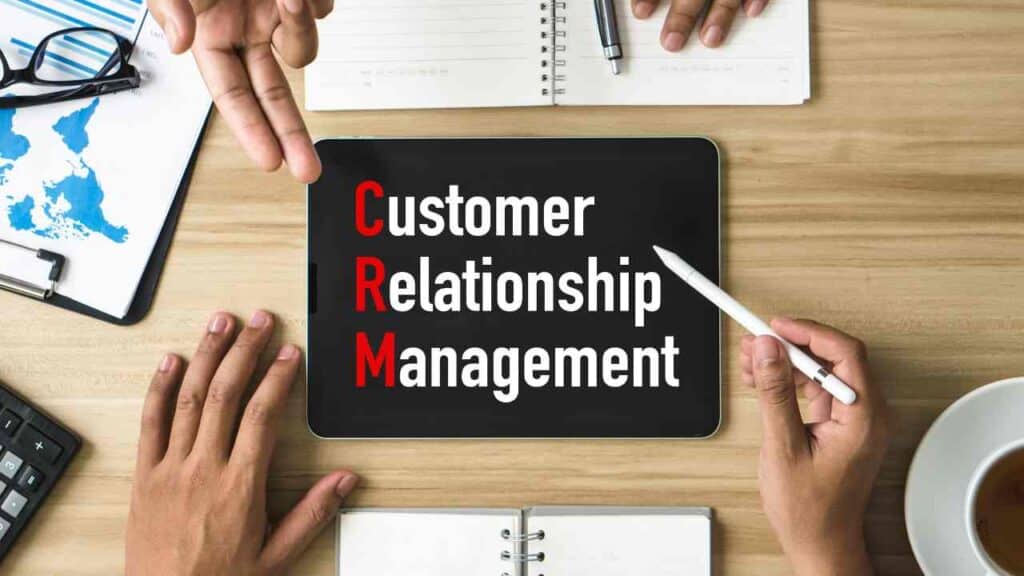Assessing Customer Behaviour with CRM

Customer Relationship Management (CRM) is a powerful tool that allows businesses to manage and analyze their interactions with customers. It provides valuable insights into customer behavior, enabling businesses to make data-driven decisions and improve their overall customer experience. In this article, we will explore the importance of assessing customer behavior with CRM and how it can benefit businesses of all sizes.
Understanding Customer Behavior
Customer behavior refers to the actions and patterns exhibited by customers when interacting with a business. It includes their purchasing decisions, preferences, browsing habits, and overall engagement with the brand. By understanding customer behavior, businesses can tailor their marketing strategies, improve customer satisfaction, and increase sales.
Assessing customer behavior involves collecting and analyzing data from various touchpoints, such as website visits, social media interactions, email responses, and purchase history. This data can be used to identify trends, patterns, and preferences, allowing businesses to personalize their marketing efforts and provide a more targeted customer experience.
The Role of CRM in Assessing Customer Behavior
A CRM system serves as a central repository for customer data, allowing businesses to track and analyze customer behavior effectively. It consolidates data from various sources and provides a holistic view of each customer’s interactions with the brand. Here are some key ways CRM helps in assessing customer behavior:
1. Data Collection and Integration
CRM systems collect and integrate data from multiple sources, such as website analytics, social media platforms, email marketing tools, and customer support systems. This comprehensive data collection enables businesses to gain a 360-degree view of their customers and their behavior across different channels.
For example, a CRM system can track a customer’s website visits, social media interactions, and email responses, providing a complete picture of their engagement with the brand. This data can then be used to identify patterns and preferences, allowing businesses to tailor their marketing messages and offers accordingly.
2. Segmentation and Personalization
CRM systems enable businesses to segment their customer base based on various criteria, such as demographics, purchase history, and engagement level. By segmenting customers, businesses can create targeted marketing campaigns that resonate with specific groups of customers.
For instance, a clothing retailer can segment its customers based on their gender, age, and purchase history. This segmentation allows the retailer to send personalized offers and recommendations to each customer, increasing the likelihood of a purchase.
3. Predictive Analytics
CRM systems use predictive analytics to forecast customer behavior and identify potential opportunities. By analyzing historical data and patterns, businesses can predict future customer actions, such as likelihood to churn, purchase probability, and product preferences.
For example, a CRM system can analyze a customer’s past purchase history, browsing behavior, and demographic information to predict their likelihood of making a repeat purchase. This insight can help businesses tailor their marketing efforts and retention strategies to retain valuable customers.
4. Customer Journey Mapping
CRM systems allow businesses to map the customer journey from initial contact to conversion and beyond. By visualizing the customer journey, businesses can identify pain points, bottlenecks, and areas for improvement.
For instance, a CRM system can track a customer’s interactions with the brand, such as website visits, email opens, and customer support inquiries. By analyzing this data, businesses can identify areas where customers are dropping off or experiencing difficulties, enabling them to optimize the customer journey and improve overall satisfaction.
Benefits of Assessing Customer Behavior with CRM
Assessing customer behavior with CRM offers several benefits for businesses:
- Improved Customer Experience: By understanding customer behavior, businesses can personalize their marketing efforts, provide relevant recommendations, and deliver a seamless customer experience.
- Increased Sales: By tailoring marketing messages and offers based on customer behavior, businesses can increase the likelihood of a purchase and drive sales.
- Better Customer Retention: By predicting customer behavior and identifying potential churn risks, businesses can implement targeted retention strategies to retain valuable customers.
- Enhanced Marketing ROI: By analyzing customer behavior, businesses can optimize their marketing campaigns, allocate resources effectively, and improve their return on investment.
- Improved Product Development: By understanding customer preferences and pain points, businesses can develop products and services that better meet customer needs.
Case Study: XYZ Retail
XYZ Retail, a leading online fashion retailer, implemented a CRM system to assess customer behavior and improve their overall customer experience. By analyzing customer data, XYZ Retail was able to:
- Segment their customer base based on demographics, purchase history, and engagement level.
- Personalize marketing messages and offers to specific customer segments.
- Predict customer preferences and recommend relevant products.
- Identify pain points in the customer journey and optimize the website experience.
- Implement targeted retention strategies to reduce churn.
As a result, XYZ Retail saw a significant increase in customer satisfaction, repeat purchases, and overall revenue. The CRM system played a crucial role in their success by providing valuable insights into customer behavior and enabling data-driven decision-making.
Assessing customer behavior with CRM is essential for businesses looking to improve their customer experience, increase sales, and drive growth. By collecting and analyzing customer data, businesses can gain valuable insights into customer preferences, predict behavior, and personalize their marketing efforts. CRM systems serve as a central repository for customer data, enabling businesses to track and analyze customer behavior effectively. The benefits of assessing customer behavior with CRM include improved customer experience, increased sales, better customer retention, enhanced marketing ROI, and improved product development. Implementing a CRM system can provide businesses with a competitive edge in today’s data-driven business landscape.
Visit https://SaasExpert.ca – Your All-In-One Sales and Marketing Platform for small businesses, agency owners, and marketers.
Learn more about “CRM Tools for Tracking Customer Behaviour” right here.
Frequently asked questions about Assessing Customer Behaviour with CRM.

1. How can CRM tools help in assessing and understanding customer behavior? 🤓
Answer: CRM tools are like a window into the customer’s world! 🌍 By collecting, organizing, and analyzing customer interactions and data, CRM tools offer invaluable insights into their preferences, buying habits, and pain points. With these insights, businesses can make informed decisions, personalize interactions, and ultimately drive customer satisfaction and loyalty to new heights. It’s not just about storing contact information; it’s about understanding your customer’s journey and tailoring your approach accordingly. 🚀💡
2. What specific metrics in a CRM should I focus on to evaluate customer behavior effectively? 📊
Answer: There’s a treasure trove of metrics within CRM systems! To effectively assess customer behavior, consider focusing on:
Engagement Metrics: Including email open rates, click-through rates, and response times. 📩📌
Purchase Patterns: Analyzing frequency, value, and types of products/services purchased. 🛍️💲
Customer Feedback: Surveys, reviews, and feedback forms to gauge satisfaction and areas of improvement. 🌟📝
Retention Rates: Measure how many customers continue to engage with your business over time. 🔁❤️
Support Interactions: Track customer support tickets, response time, and resolution rates. 🆘🔧
Remember, the key is not just to collect these metrics but to analyze and act upon them to enhance the customer experience continually. 🔄✨
3. Can I use CRM data to predict future customer behavior and trends? 🔮
Answer: Absolutely! Modern CRM tools come equipped with predictive analytics features that can forecast future customer behaviors based on historical data. 📜🔍 By recognizing patterns, you can anticipate needs, launch timely marketing campaigns, and even develop products or services that cater to upcoming trends. It’s like having a crystal ball that helps you stay ahead of the curve and meet your customers right where they’ll be. 🌐🎯
4. How can I ensure that my CRM assessments of customer behavior are accurate and unbiased? ⚖️
Answer: Great point! Ensuring accuracy and objectivity is crucial. Here’s how you can achieve it:
Diverse Data Sources: Gather data from multiple touchpoints – emails, social media, surveys, etc. – to get a holistic view. 🔄🔍
Regular Data Cleaning: Update and clean your CRM data to remove outdated or irrelevant information. 🧹🔄
Training: Ensure that your team is well-trained to input data consistently and without biases. 📚👩🎓
Automated Tools: Utilize AI and machine learning features in CRM tools to analyze data without human bias. 🤖💡
By maintaining data integrity and using advanced analysis tools, you can ensure that your assessments are both accurate and actionable. ✔️📈
5. How can I leverage CRM assessments to improve the overall customer experience? 🚀
Answer: CRM assessments are a goldmine for enhancing the customer experience! By understanding what your customers love, what frustrates them, and where they face challenges, you can:
Personalize Marketing Campaigns: Tailor promotions and content to individual preferences. 💌🎯
Optimize Support: Address common pain points and streamline the support process. 🛠️❤️
Enhance Product/Service Offerings: Modify or introduce new offerings based on customer feedback and buying patterns. 📦✨
Build Stronger Relationships: Engage with customers in meaningful ways, recognizing their milestones, preferences, and feedback. 🤝🎉
In essence, CRM assessments empower you to walk in your customer’s shoes and craft experiences they’ll truly cherish. 👟💖






